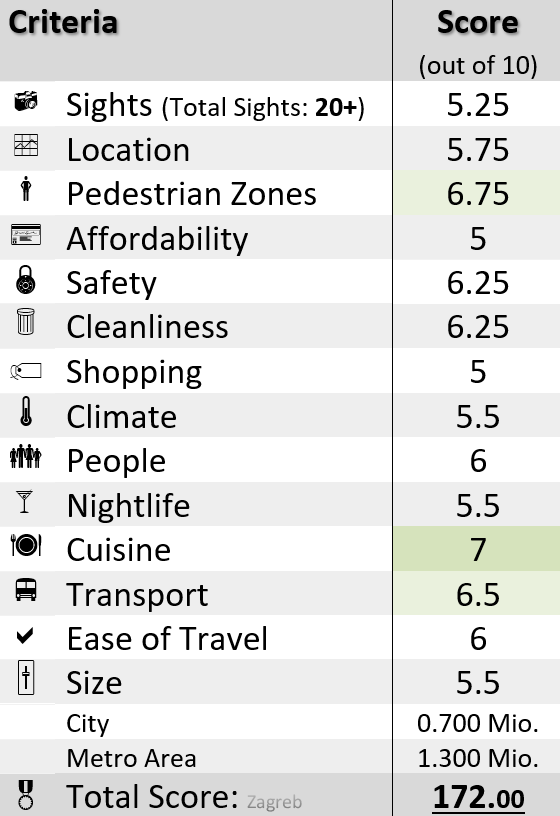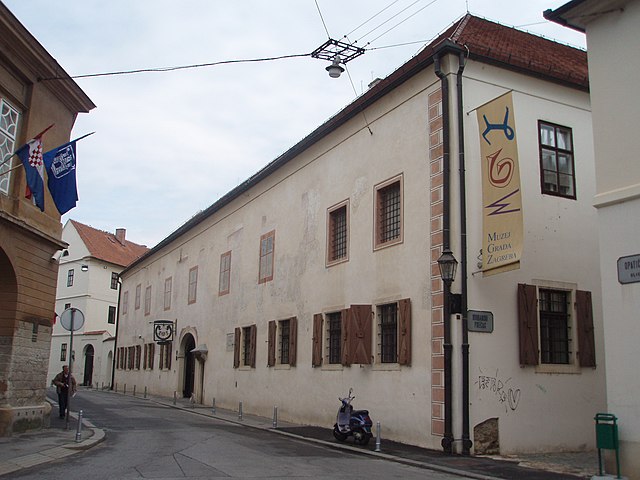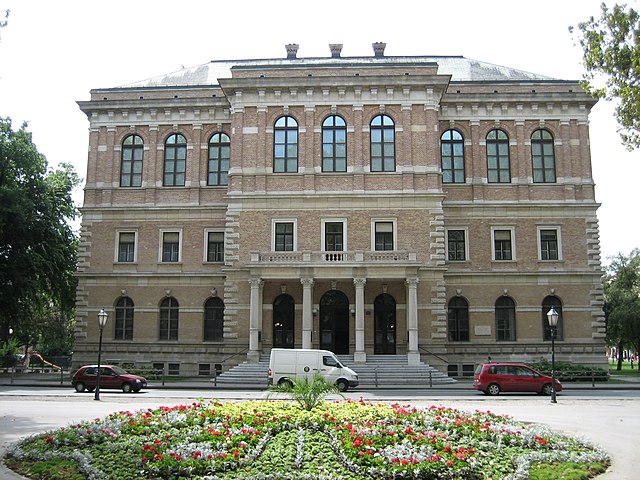by Hrga / CC BY-SA 2.0
A Tale of Gradec and Kaptol: Two Medieval Cities Forming Zagreb’s Heart
Table of Contents
A. About Zagreb
Nickname: Little ViennaHistorically, the Croatian capital Zagreb was divided into two rival settlements: Gradec, with wealthy merchants and nobility, and Kaptol, governed by the Church. They often clashed until the Austro-Hungarian Empire expanded into the region. Gradec and Kaptol, the two distinct cores of medieval Zagreb, are forming today's Upper Town (Gornji Grad).
The city showcases a fascinating blend of Austro-Hungarian, Gothic, and Baroque architecture, with highlights like the Zagreb Cathedral, St. Mark's Church, and numerous palaces. These styles reflect its diverse historical influences and regional significance.
In recent decades, Zagreb has modernized rapidly with new infrastructure, expanding its public transport, and developing business districts.
The city is also known for its parks and green areas, including Maksimir Park and the Green Horseshoe.
➕ The Good
Firstly, Zagreb features a charming old town with pedestrian-friendly areas, making it enjoyable for walking tours.
In terms of affordability, Zagreb is somewhat affordable compared to Western Europe, but it can be more expensive than other Eastern European cities.
When it comes to food, Zagreb excels in its local cuisine, with hearty traditional Croatian dishes being a highlight. Additionally, the city offers a range of international cuisine.
Finally, Zagreb has a well-functioning public transport system, with its blue trams and buses making it easy to get around the city.
➖ Negative Aspects
Zagreb has no real flaw. While there is a lot to see in Zagreb, with no sight or attraction scoring higher than 5/10, no sight really stands out.
Furthermore, following the major 2020 earthquake, numerous museums and churches remain closed as they undergo extensive restoration work.
B. Best Things to Do in Zagreb in 2025 (Detailed List with Photos and Information)
In total, we count more than twenty sights in Zagreb. The following sights contribute to a score of 5.25/10 in this most important category:
#1 | Zagreb Cathedral (Cathedral of the Assumption) 5 
Temporarily closed
The Cathedral of the Assumption in Zagreb is a prominent Gothic-style church built in the 11th century, heavily restored after a 19th-century earthquake.
It features elegant twin spires and serves as the seat of the Archbishop of Zagreb.
⚠️ The 2020 Zagreb earthquake, with a magnitude of 5.3, struck on March 22, damaging several buildings, including the Zagreb Cathedral, where the southern spire broke off.
By 2024, both spires were shortened by 30 meters as part of an extensive restoration process, which continues with no confirmed reopening date.
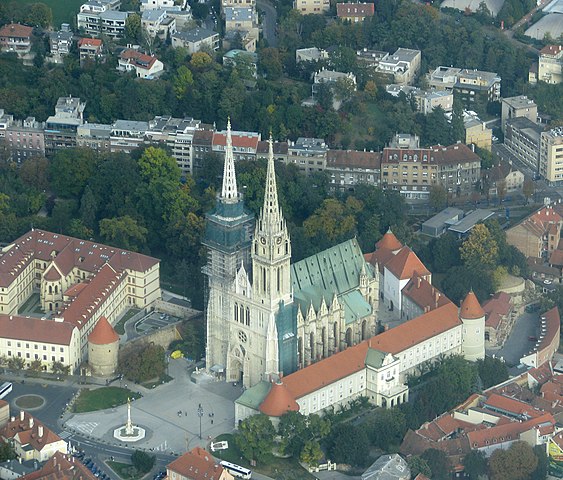
by Suradnik13 / CC BY-SA 3.0
#2 | Upper Town (Gornji Grad) 5 
Upper Town (Gornji Grad) is the historic core of Zagreb, known for its cobblestone streets, medieval buildings, and charming squares, offering a glimpse into the city's rich past. It is home to many of Zagreb’s most important landmarks, including the Cathedral, St. Mark’s Church, and Lotrščak Tower.
Gradec and Kaptol were the two distinct medieval settlements that later merged to form what is now Zagreb's Upper Town. Gradec was a fortified town on the western hill, primarily inhabited by artisans and merchants, while Kaptol, located on the eastern hill, was the ecclesiastical center dominated by the clergy and the Zagreb Cathedral.
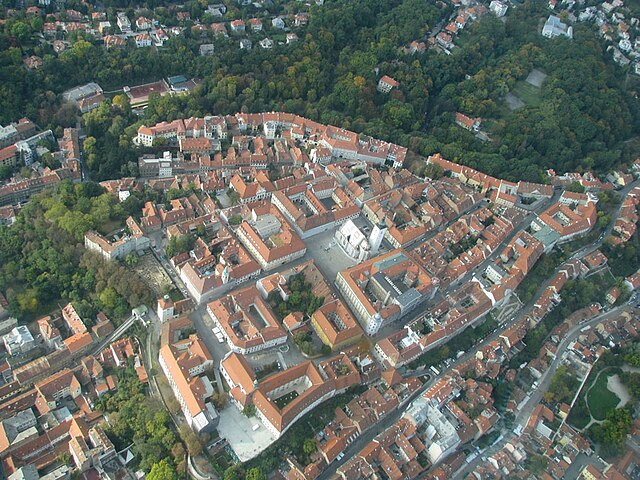
by Suradnik13 / CC BY-SA 4.0
#3 | Jelačić Square (Trg Bana Josipa Jelačića) 5 
The heart of Zagreb, Jelačić Square is a lively meeting point rich in history, named after the 19th-century Croatian hero, Ban Josip Jelačić. It is a bustling hub of activity, surrounded by historic buildings and connected to major pedestrian streets.
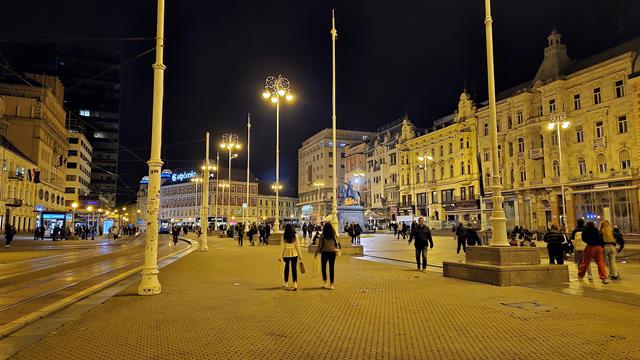
by worldcitiesranking.com / CC BY-SA 3.0
#4 | St. Mark's Church and Square (Crkva sv. Marka) 5 
The 13th-century St. Mark's Church is famous for its colorful roof, which features the coats of arms of Zagreb and Croatia.
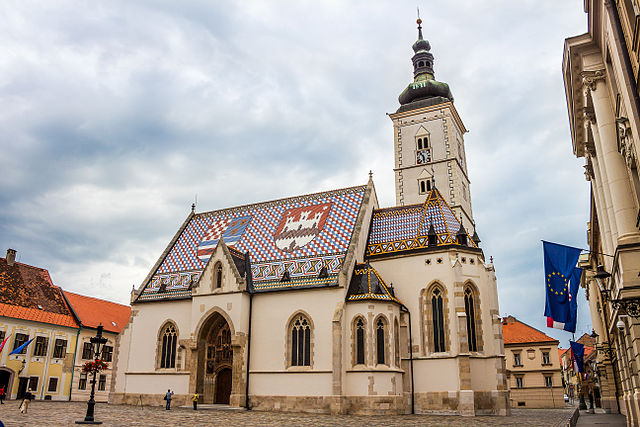
by Juraj Patekar / CC BY-SA 2.0
#5 | Lotrščak Tower 5 
Lotrščak Tower, dating back to the 13th century, once protected Zagreb’s southern gate and now offers stunning panoramic views of the city.
by Vislupus / CC BY-SA 4.0
#6 | Archaeological Museum Zagreb 5 
The Archaeological Museum Zagreb boasts a rich collection, including the famous Zagreb Mummy and ancient Etruscan artifacts.
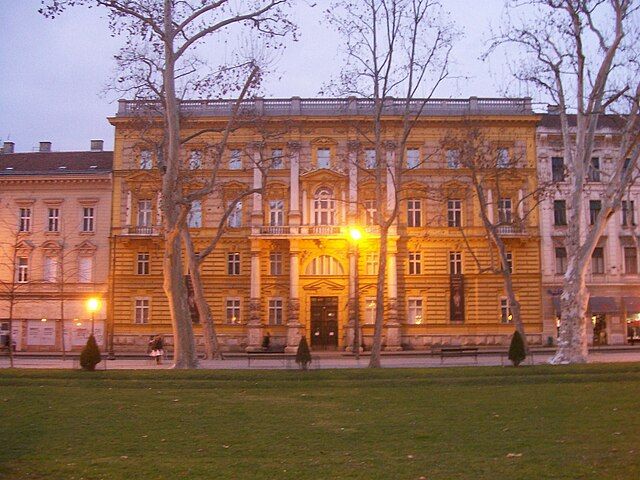
by Suradnik13 / CC BY-SA 4.0
#7 | Museum of Contemporary Art (MSU) 5 
Designed by Croatian architect Igor Franić and featuring a striking minimalist exterior with large glass facades and dynamic interior spaces, this fantastic museum opened its new and building in 2009. It is the biggest and most modern museum in Croatia.
Impressive temporary exhibitions at the museum offer a global perspective on contemporary art.
One of the museum’s most notable installations is the “Double Slide” by Carsten Höller, a spiraling slide that takes visitors from the top floor to the ground, blending art with an interactive experience.
Contemporary Art Museum Gallery Space: ca. 5,000 m2 | Established: 2009 | Construction Cost: 84 million euros
by worldcitiesranking / CC BY-SA 3.0
#8 | Maksimir Park 5 
Maksimir Park, established in 1794, is one of the oldest public parks in Europe, designed in Baroque style with a combination of natural and landscaped features.
It originally served as a royal hunting ground before being opened to the public. The park includes lakes, meadows, and historical structures like the Pavilion and the Gothic-style entrance.
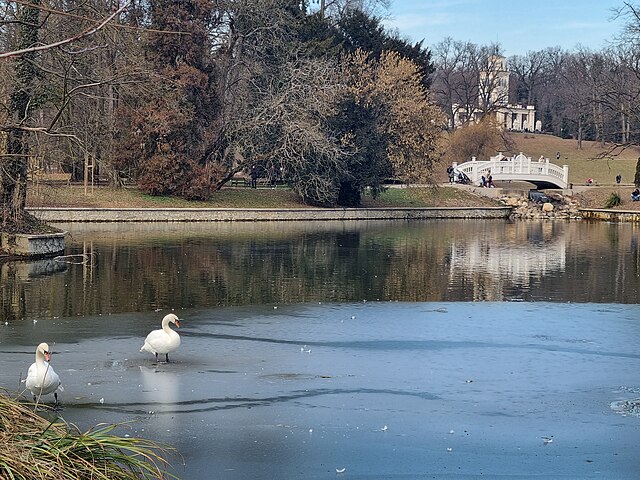
by Janjko / CC BY-SA 4.0
#9 | Klovićevi Dvori Gallery 5 
The gallery is located in a 17th-century Jesuit monastery, which was repurposed in the 1980s as an art gallery, blending historic architecture with contemporary cultural use.
The gallery is known for hosting large-scale international exhibitions, including works by famous artists such as Pablo Picasso, Joan Miró, and Marc Chagall, as well as regional and Croatian artists.
Art Museum Gallery Space: 2,630 m2 | Galleries: ca. 20 | Opened: 1980 | Visitors [2018]: 344,000
by worldcitiesranking.com / CC BY-SA 3.0
#10 | Ivan-Tkalcic Street (Tkalčićeva Street) 5 
This lively pedestrian street, named after the 19th-century Croatian writer Ivan Tkalčić, is renowned for its vibrant cafes and charming boutiques.
It is lined with colorful baroque buildings that reflect Zagreb's historical architecture.
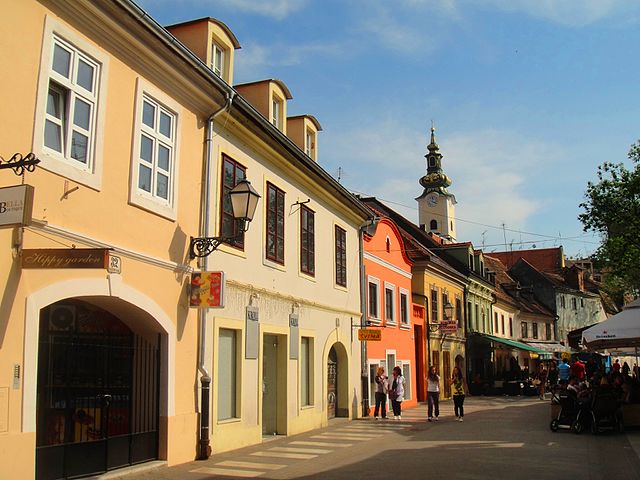
by Qaalvin / CC BY-SA 3.0
C. Other Notable Sights and Attractions in Zagreb
#11 | Zagreb City Museum 5 
The Zagreb City Museum chronicles the city's history through an extensive collection of artifacts, documents, and exhibits, ranging from prehistoric times to the modern era.
It provides a comprehensive overview of Zagreb's development and cultural evolution.
by Mister No / CC BY-SA 3.0
#12 | Dolac Market 5 
Dolac Market is Zagreb's vibrant central market, known for its fresh produce, local products, and colorful stalls.
Located near Jelačić Square, it has been the city's main marketplace since 1930.

by Rilegator / CC BY-SA 4.0
#13 | Mirogoj Cemetery 5 
Mirogoj Cemetery is one of the most beautiful cemeteries in Europe, known for its impressive arcades, sculptures, and greenery.
Established in the late 19th century, it serves as a resting place for many notable figures in Croatian history.
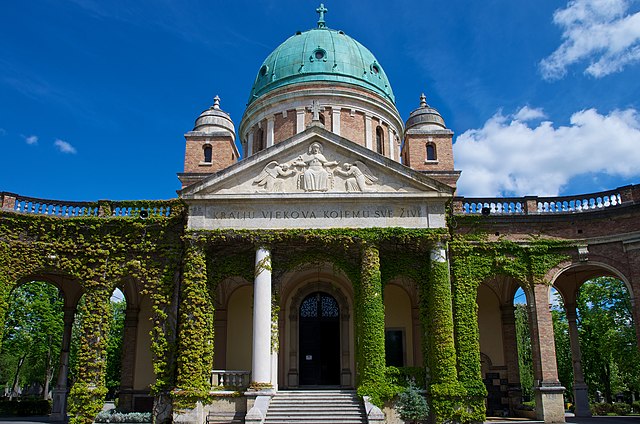
by FoxyStranger Kawasaki / CC BY-SA 3.0
#14 | Nikola Zrinski Square (Zrinjevac) 5 
This central park square is named after a famous Croatian nobleman and is part of Zagreb’s Green Horseshoe. It features a statue of King Tomislav and lush greenery, making it a popular gathering spot.
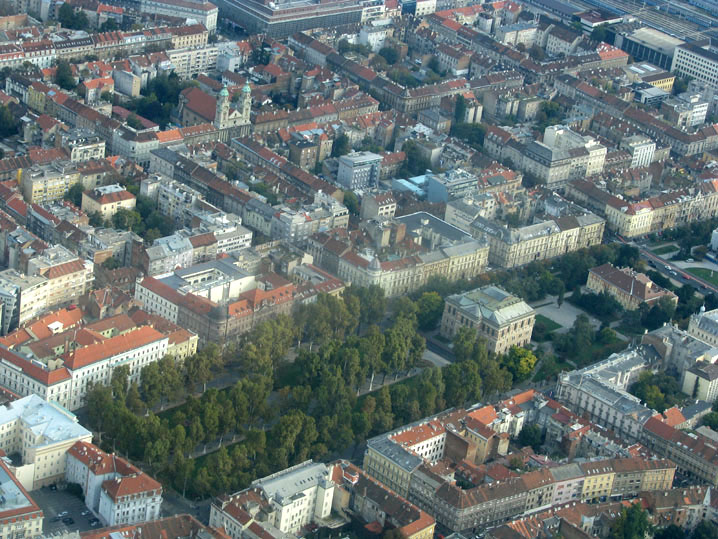
by Suradnik13 / CC BY-SA 3.0
#15 | Vojkovic-Oršic Palace - Croatian History Museum 5 
Temporarily closed
The palace, built in the 18th century, houses exhibits detailing Croatia's national history. The baroque-style palace itself is a significant historical monument.
It showcases artifacts from prehistoric to modern times.
⚠️ As of 2024, the museum is closed pending the completion of reconstruction following the 2020 Zagreb earthquake.
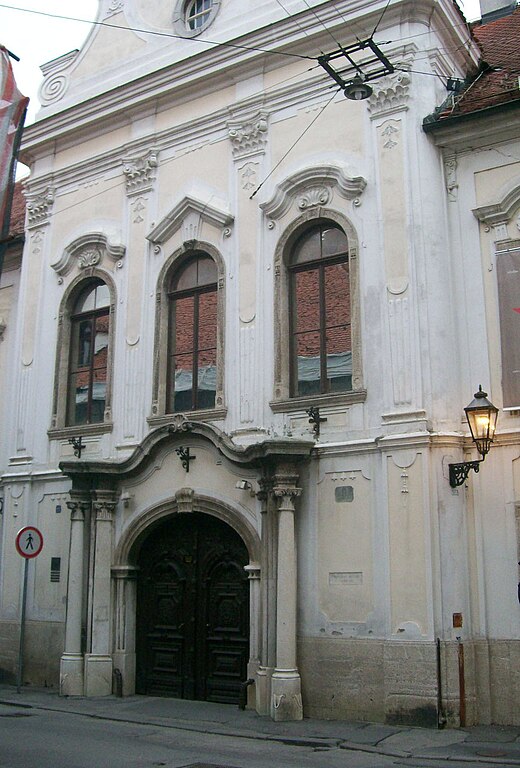
by Suradnik13 / CC BY-SA 4.0
#16 | Strossmayer Gallery of the Old Masters 5 
Temporarily closed
This gallery, founded by Bishop Josip Juraj Strossmayer in 1884, houses an interesting collection of European paintings from the 14th to 19th centuries.
The gallery includes works from Italian, Dutch, and Flemish masters, as well as Croatian artists. It's part of the Croatian Academy of Sciences and Arts.
⚠️ In 2020, the art gallery building was damaged by a strong earthquake, and is closed as of 2024 due to repairs.
by Donatus (Darko Tepert) / CC BY-SA 3.0
#17 | Muzej Mimara 5 
Temporarily closed
Opened in 1987, this museum houses a vast collection of artworks, artifacts, and antiquities spanning over 3,000 years.
Its collection includes European masterpieces, Far Eastern artifacts, and ancient objects. The museum is located in a grand 19th-century building.
⚠️ The museum is unfortunately closed due to complete reconstruction after the earthquake of 2020.
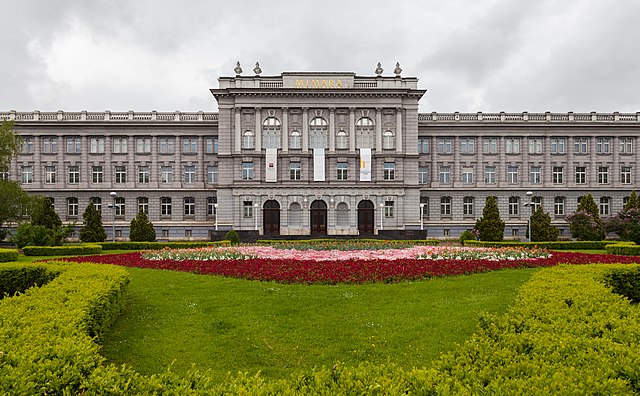
by Diego Delso / CC BY-SA 3.0
#18 | St Catherine's Church 5 
Temporarily closed
Catherine's Church, an exquisite example of Baroque architecture, is renowned for its magnificent altar dedicated to St. Catherine of Alexandria.
Furthermore, the church features a stunning frescoed ceiling and intricate woodwork, showcasing the artistry of Croatian craftsmen.
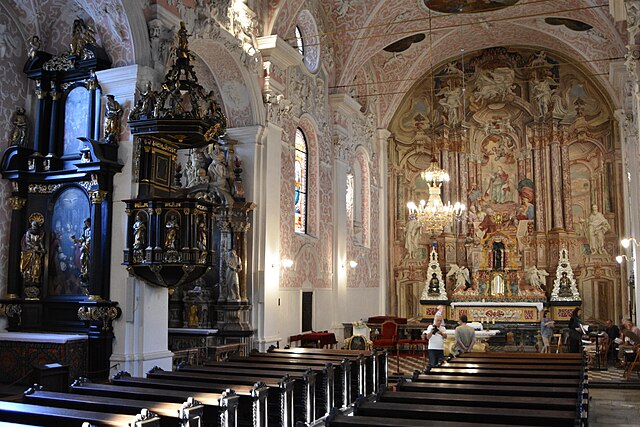
by Nxr-at / CC BY-SA 4.0
#19 | Museum of Croatian Naïve Art 4 
The Museum of Croatian Naïve Art showcases works by Croatian naïve artists, featuring vibrant and unpretentious art that highlights the creative expressions of self-taught artists
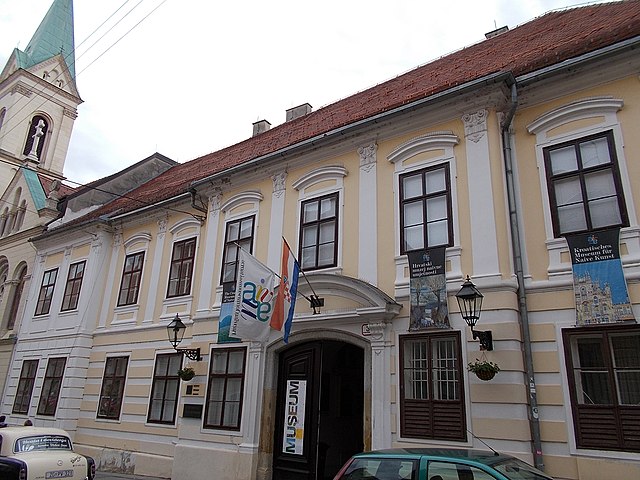
by Szeder László / CC BY-SA 4.0
#20 | Museum of Broken Relationships 4 
This very small museum displays personal objects left behind after breakups, along with accompanying stories, creating an emotional and thought-provoking experience.
It is a unique and popular museum located in the Upper Town.
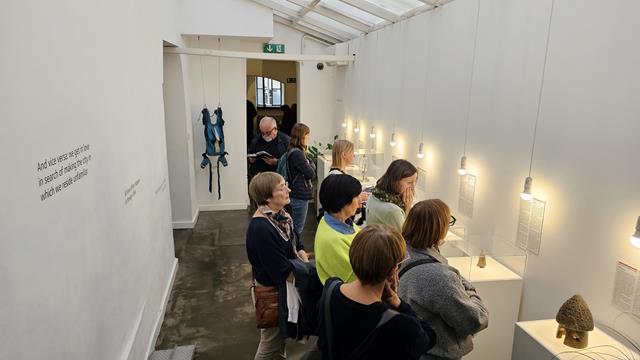
by worldcitiesranking.com / CC BY-SA 4.0
#21 | Mestrovic Workshop (Atelijer Meštrović) 4 
Temporarily closed
The Mestrovic Workshop is a museum dedicated to the works of Croatian sculptor Ivan Meštrović, featuring his sculptures, sketches, and personal items.
It provides an intimate look into the life and creative process of one of Croatia’s most renowned artists.
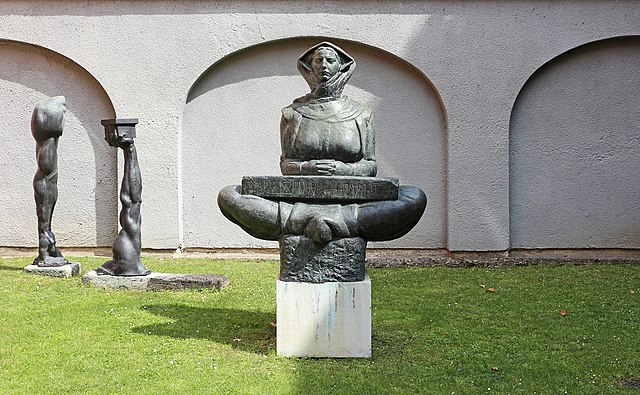
by Bernard Gagnon / CC BY-SA 4.0
-
- Zagreb Opera House (Croatian National Theatre) 4
- Funicular Railway 4
- Kamenita Vrata (Stone Gate) 4
- Oktogon 4
- Nikola Tesla Technical Museum 4
- Botanical Garden 4
- Croatian State Archives 4
- Croatian National Theatre 4
- Arena Center 4
- Zoološki vrt Maksimir 4
- Croatian Association of Fine Artists 4
- Sljeme Cable Car 4
D. Best Day Trips and Excursions from Zagreb
PLITVICE LAKES NATIONAL PARK 7 
This UNESCO World Heritage site, located outside of Zagreb, features 16 terraced lakes connected by waterfalls and lush greenery.
The lakes' distinct blue and green hues change with the seasons. It’s one of Croatia’s most popular natural attractions.
National Park | Waterfall 🌍 World Heritage Site: since 1979 | Distance from Zagreb: 130 km
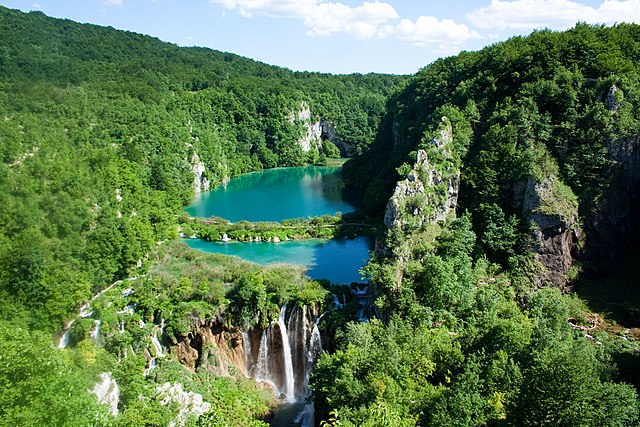
by Pablo BM / CC BY-SA 2.0
E. Top 10 List of the Best Things to Do in Zagreb (including close-by excursions)
To sum things up, these are the ten best sights we recommend you visit first while spending at least three or more days in Zagreb.
F. Practical Information
Best Time to Visit:
The best months for good weather in Zagreb are March, April, May, June, July, August, September and October. Late spring and early fall are arguably the best times to visit.
Connection from the Airport (6/10):
Zagreb Airport (ZAG) is located outside of Zagreb, in Velika Gorica, only 15 kilometers from the city center.
– Shuttle buses conveniently depart from the airport every 30 minutes. Tickets are €8 and Pleso Prijevoz shuttle buses leave every 30 minutes between 6.00am-10.30pm and whenever a flight arrives in the late night hours. They dont go very near to the city centre.
– Public Bus 290 runs from Monday to Saturday, 4:30 AM to 12:15 AM, and Sundays from 5:35 AM to 12:15 AM. The trip takes approximately 35 minutes, with buses departing every 35 minutes on average.
– A taxi to central Zagreb costs 20 to 34 euros, depending on traffic. If it's not a registered taxi, agree on the price before leaving the airport.
– Uber is a cheaper option, with a flat rate of about 19 euros.

